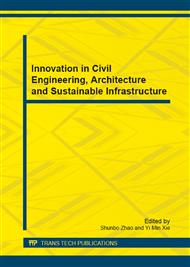p.153
p.157
p.161
p.165
p.169
p.173
p.176
p.181
p.185
A Kind of Simple Method for Mesh Generation of Concrete at Meso Level
Abstract:
The paper proposed a method to generate the finite element mesh of concrete at meso level semi-automatically. And an aggregate meshing computer program, AggMesh, was developed by C++ language. Since it avoids the judgment of node coincidence in contact surface between aggregates and mortar through meshing process, the approach can greatly increase the finite element meshing capability for concrete mesostructure and improve meshing efficiency. The study shed light on preparation for simulating concrete strength at meso level.
Info:
Periodical:
Pages:
169-172
Citation:
Online since:
November 2012
Authors:
Keywords:
Price:
Сopyright:
© 2012 Trans Tech Publications Ltd. All Rights Reserved
Share:
Citation:


